Saturday, April 15, 2023Volume 1, Edition




 PHOTOS BY AMY KYLLO
PHOTOS BY AMY KYLLO

Saturday, April 15, 2023Volume 1, Edition




 PHOTOS BY AMY KYLLO
PHOTOS BY AMY KYLLO



MABEL – When Dr. Sue Wiegrefe harvests hazelnuts, the process can only be described as scientific. As a plant geneticist, Wiegrefe is applying her skills to produce exceptional hazelnut genetics.
Wiegrefe owns Prairie Plum Farm, which is a 14.5-acre farm where she raises hazelnuts, elderberries, sheep, apples, pears and … wild plums, the namesake of the farm.



Wiegrefe planted her first hazelnuts in 2015. She is working to develop hazelnut genetics to provide a high-quality seed.
“I can add value to the genetics by deleting the bottom 10% and selling the seeds from only the top 10%,” Wiegrefe said.

Each bush is harvested and judged by the size and quantity of the hazelnuts that it produces. Wiegrefe said she is interested in the bushes that produce hazelnuts that are predominantly 5/8 of an inch in diameter or greater. Besides
tracking their diameter, she cracks and weighs the hazelnuts to determine the percent kernel versus shell.
Wiegrefe is intentional with the plant genetics that she brings onto her farm.


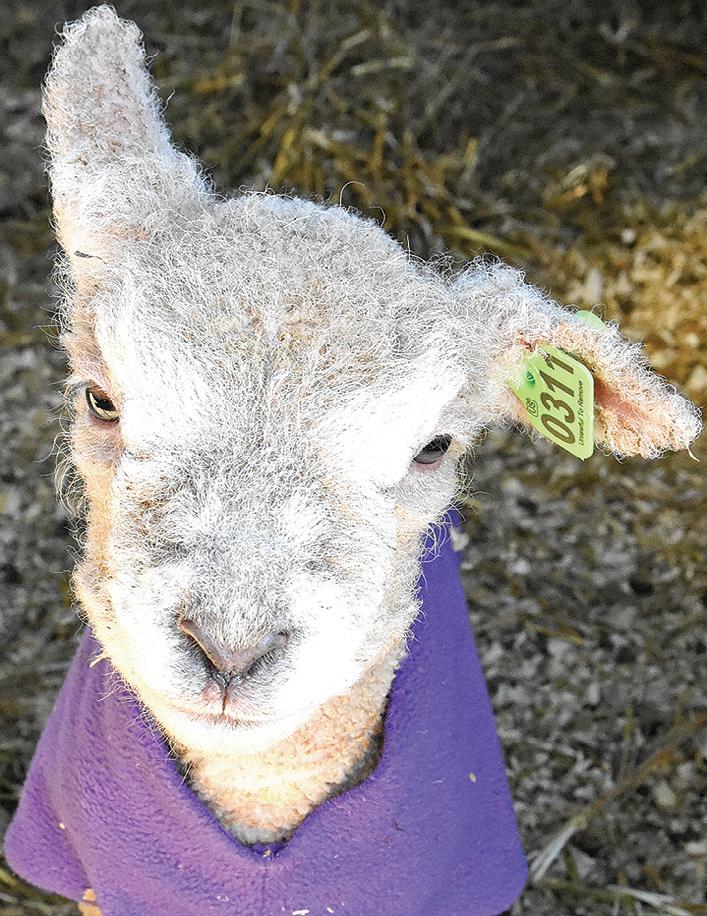



“I am building on the decades of work on hazelnuts done by my former employer, Badgersett Research Corporation,” Wiegrefe said. “I handpicked the parents for the plants from materials I observed there. By knowing the mother you know at least half of the genetics and so I specifically chose ones that I thought had promise.”
As Wiegrefe hones her plant collection through tracking of har-





vest and intentional culling, she consciously works to keep a variety of plant families.
“I am a believer in genetic diversity,” Wiegrefe said. “On the hazelnuts I am hoping to have plants that are similar but not identical.”
NEWS STAFF
Mark Klaphake, Editor, mark.k@dairystar.com
Grace Jeurissen, Editor, grace.j@star-pub.com
Amy Kyllo, Writer, amy.k@star-pub.com
Tiffany Klaphake, Writer, tiffany.k@dairystar.com
Jan Lefebvre, Writer, jan.l@star-pub.com
Ben Sonnek, Writer, ben.s@saukherald.com
Sarah Colburn, Staff Writer
Story ideas send to: grace.j@star-pub.com, mark.k@dairystar.com


SALES STAFF
Laura Seljan, 507-350-2217, laura.s@dairystar.com
Julia Mullenbach, 507-438-7739, julia.m@star-pub.com
Missy Traeger, 320-291-9899, missy@saukherald.com
Tim Vos, 320-492-6987, tim.v@star-pub.com
Mike Schafer, 320-894-7825, mike.s@dairystar.com
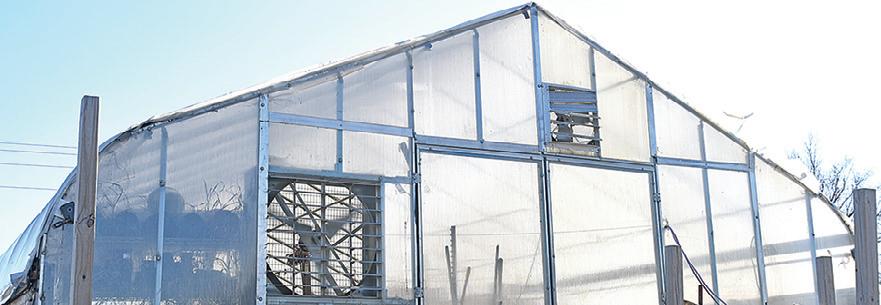

Warren Stone, 320-249-9182, warren@star-pub.com
Jaime Ostendorf, 320-309-1988, Jaime@star-pub.com
Bob Leukam, 320-260-1248, bob.l@star-pub.com


PRODUCTION STAFF
Pat Turner | Amanda Thooft | Nancy Powell
Maddy Peterson | Cheyenne Carlson
Karen Knoblach | Annika Gunderson
Deadlines:

Country Acres will be published the first and third Saturday of every month. Deadline for news and advertising is the Thursday before publication.



“Committed to being the eyes and ears of our communities.”
On Prairie Plum Farm, Wiegrefe aims to have her plants and animals work in synergistic harmony. She owns a flock of sheep which she uses, in part, to graze and maintain her orchard. Eventually, when her hazelnuts have matured enough, she hopes to graze the sheep among hazelnuts in the late fall as well.
“I wanted to get the sheep because I have semi dwarf apples in my orchard,” Wiegrefe said. “Mowing under that … you have to be suicidal.”

Keeping the vegetation down around the hazelnuts is important as well. A clear area deters hazelnut predators, pocket gophers for example, who she said enjoy stockpiling hazelnut roots during winter.
“You start to realize how many biological entities are your enemies,” Wiegrefe said.


If the grass and vegetation are kept down via grazing or mowing it makes the area less inviting, and the hawk’s job easier to keep the pocket gopher population down. Wiegrefe hopes to be able to graze some of her oldest hazelnut bushes in two years.


On the farm, she
owns two breeds of sheep: Baybdoll Southdown and Babydoll Southdown Finnsheep crosses. The Babydolls are what she uses to graze her orchard. The breed stands at 24-inches or less at the shoulder, and are good at grazing on ground level and not foraging among the branches of the fruit trees. Finnsheep, however, are foragers but have much longer wool. Crossing the two breeds gives Wiegrefe more options for processing and selling her wool since Babydoll sheep have shorter wool that not all processors have the technology to process. Currently, her goal is for her crosses to be 5/8 Finnsheep and 3/8 Southdown Babydoll.
Wiegrefe lambs approximately 28 ewes. During lambing season days are filled with checkins every two hours, feedings every four hours and a daily weigh-in of newborns to check that they are gaining properly.

She is also raising a livestock guardian dog. The 10-month-old Great Pyrenees puppy is already starting to defend her hazelnuts via a daily walk around the farm to help deter deer.
“We did determine that even as modest as the deer pressure is, the furthest row of hazelnuts has been reduced by two years’ worth of growth,” Wiegrefe said.
She is working towards making her hazelnut operation independently profitable.
“I’m trying to make

it pay, I really am,” Wiegrefe said. “It will be a while, though, with all of these juvenile plants yet to begin bearing.”


As her hazelnuts mature, and she continues to develop her plants, she hopes to see the farm become more profitable.

Developing the hazelnuts is a good financial decision. She said that the pay for hazelnuts sold for human consumption is about $1.30 a pound. This makes selling them on the straight commodity market less profitable than selling them for seed, she said.
Developing the hazelnuts also connects to the scientist’s education and experience. Wiegrefe earned her bachelor’s in horticulture, her master’s degree in ornamental horticulture and her Ph.D. in plant breeding and genetics.
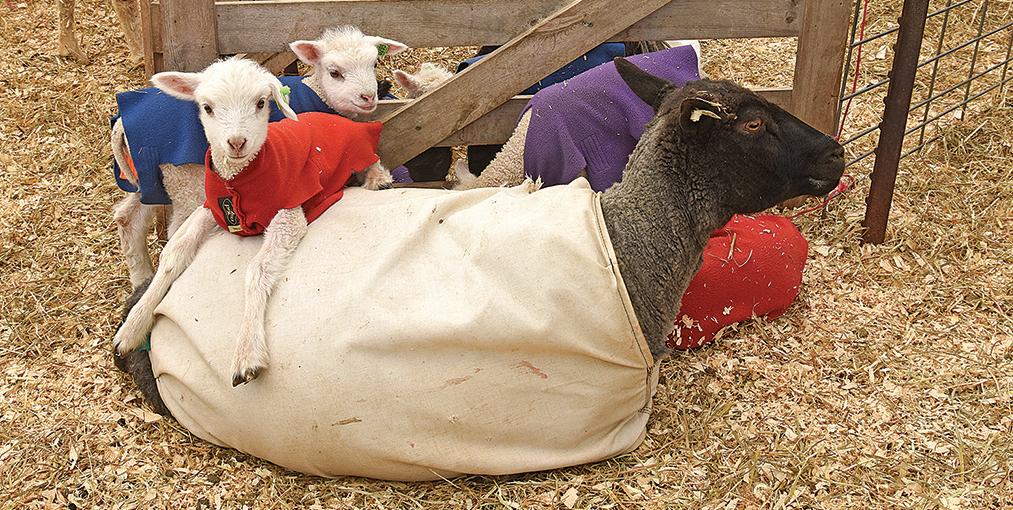

























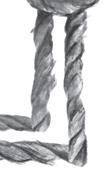






















Those old gambrel roof barns have rafters that reach up towards heaven. I’m anticipating that design was to hold the history and memories that happened down below.


When you drive through the countryside, it’s not an uncommon site to see a beautiful red wooden barn standing monumental as the centerpiece to a generational family legacy that roots deeper than the hundred-year-old oak standing next to it.





Beneath the shingles and beneath the rafters of those barns is where some of the most meaningful connections are established, from the handshake agreements of our grandfathers to the dances celebrating the knot being tied.







Barns are a beautiful beacon of diversification. Over the last century we’ve seen generations of farm families progress their operations and those gambrel roof buildings have gained a new purpose. For some, the tiestall barn still stands as their home away from home, a place where their livelihood lies and that of the next generation.
But they are finding a different use. Dotting the hills and valleys of Minnesota are renovated barns now serving as a place where families join for weddings and celebrate the future generation in a rustic but classy feel. Coming from a farm family, I’m amazed they were able to get the manure smell from out of the walls and beams.
Oh, if those creaking walls could talk. Stories would be told of its construction. Neighbors gathered to lay the stone foundation and fasten the beams together with square nails black smithed not more than 200 feet from where the building stands today. The names of the 6 kids were carved in the back corner of the hayloft and years of graffitied memories were etched alongside it.
A patched hole in one corner marks where a cousin fell through the floor, his legs dangling over one of the Holstein’s heads as he hollered for help.









A young couple sway together, listening to the rhythm of the vaccum pump flushing the milk to the next room, while at the neighbor’s farm, the children gather quietly to watch their dad assist a Hereford heifer giving birth for the first time.
Ten years later, a rambunctious brown-eyed girl in a calico dress, pig tails and rubber boots asks to sit atop her favorite cow while polka music softly floats between the feed lanes.
But for me, those tiestall memories were cut short. Not more than a few years and our handprints were being pressed into the fresh concrete which would soon be the front door to opportunity.

Grandpa sits on his chair, his John Deere walking cane hooked on the back and his lip full of Copenhagen tobacco, watching the next generation of farmer sporting a calico dress, pig tails and rubber boots, make chalk marks on the newly poured cement.










































Knowing the barn in which he started his legacy will never see cows again, he’s content, as he knows the future of the family farm is secured 45 minutes away with room to spread its wings.


Through tornadoes, droughts and family feuds, many of those tiestall barns still house a generation of farm families. Their legacy, although feeling threatened at times, is peaceful and full of hope.
Those memories live on in our hearts, and with each memory is a piece of history, maybe history we should write down.










 BY SARAH COLBURN | STAFF WRITER
BY SARAH COLBURN | STAFF WRITER











RUSHFORD – Featherstone Farm begins each season with millions of seeds. The seeds serve as the base of the organic farm’s growing program which provides produce to an anticipated 1,100 Minnesota families who participate in the farm’s Community Supported Agriculture program.
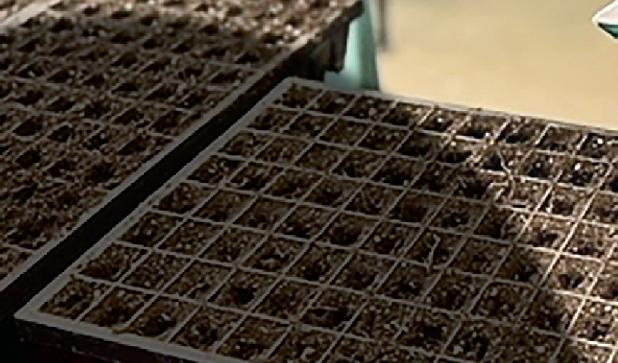

The farm spans 250 acres near Rushford but only 130 are in production at any given time because Featherstone Farm focuses on cover crops and soil health, said Patty Zanski Fisher.
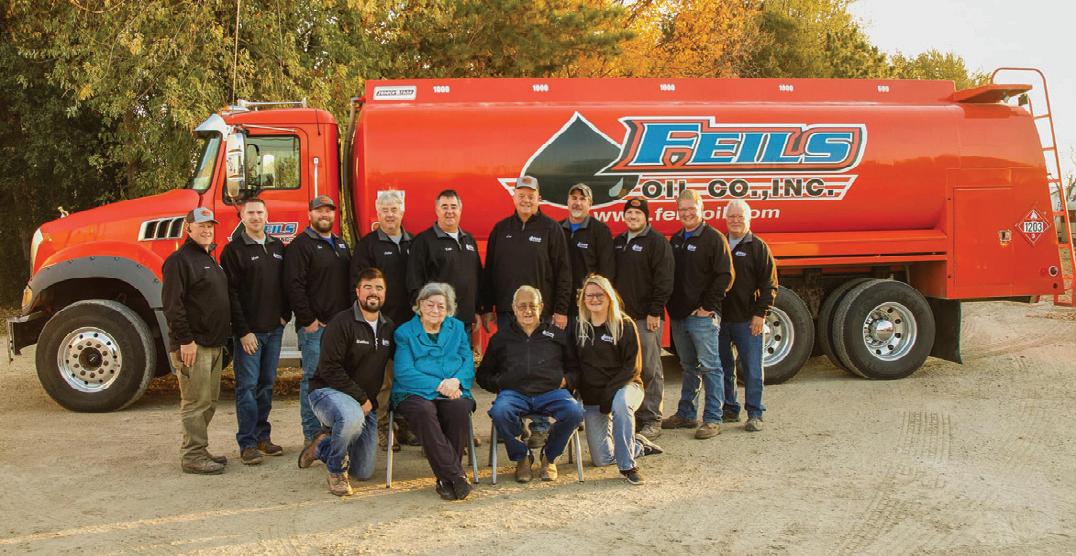
Zanski Fisher is the CSA coordinator for Featherstone Farm.

Featherstone Farm grows more than 50 fruits and vegetables, everything from kale, onion, parsley and cabbage to pepper, sweet corn, melon, broccoli, zucchini, cucumber and carrot.
“People want local,” Zanski Fisher said. “They want organic. … You’re competing against bigger outlets with cheaper foods that are trying to play the same game but not in as true of a way as your CSA farmers are.”
The farm provides goods to cooperatives throughout southeastern Minnesota, the Twin Cities area and seven Whole Foods Market stores in the area as well as the company’s warehouse in Chicago. It also supplies to Coop Partners Warehouse that distributes organic fruits and vegetables to local coops but also serves as a distribution hub to supply Michigan, Iowa, Illinois, Wisconsin, South Dakota and North Dakota.
The farm’s CSA program is based on consumer choice. Each box of vegetables packed meets exactly what the customer wants for the week. Customers pick up their CSA boxes weekly from 32 locations in Minnesota including the Twin Cities area, Rochester and Winona as well as in La Crosse, Wisconsin.

For five or six years, Zanski Fisher said the CSA program lost customers year after year. The farm was forced to scale back on the variety it supplied to its boxes, but due to consumer demand, they returned the choices and added to them. Now, customers get a fully customizable box.

“Once we switched to customization, we’ve









been selling out our shares since,” Zanski Fisher said. Customers begin by ranking the fruits and vegetables they prefer. Staff then take that information and create a box based on consumer preferences and what is available at the farm. From there, customers receive an email a few days before delivery outlining exactly what is in their box for the week. At that point, they can customize even further and swap out items they may not want.
Featherstone also has partnerships with other organic growers and offers its customers the ability to add things weekly such as organic garlic, and at customer request, they will also include organic, free-range eggs with the order bi-weekly. Each box includes recipes for how to use the contents as well as tips for storage and cooking.
Featherstone page 6
Featherstone from page 5


The farm is working to build other partnerships that could also give customers the option of adding organic raspberries and apples and even, perhaps, mushrooms.
Zanski Fisher said Featherstone Farm not only focuses on supplying high-quality foods, but they also pay their staff a living wage and aim for environmental sustainability. The farm is certified organic and Good Agricultural Practices certified, meaning they submit to voluntary audits that verify their produce is harvested, washed, handled and packaged in a way that minimizes the risk to
food safety.
Farm organizers are working to provide other goods beyond produce as well. For the last year, customers have received organic, milled flour from the farm, they have also been pressing their own watermelon juice.

Leaders at the farm have applied for a grant to build a commercial kitchen on-site that would allow the farm to cold-press a variety of juices moving forward.

Zanski Fisher said she envisions carrot juice, a carrot and beet combination juice, and a green medley. If the grant is approved, the juices could hit CSA boxes as
early as this fall.

“The consumer can get everything they want through one farm,” Zanski Fisher said. “It’s really beneficial for the CSA program.”
Featherstone Farm extends its growing season through the use of three high tunnels, allowing them to offer shares for spring, summer and winter. They direct seed half the foods into the ground outdoors and the other half are started in the tunnels, hardened off and taken outside to transplant with the use of a tractor.
The farm employs 50 people seasonally who come from Mexico through the H-2A program, and there are 12 year-round employees.

Zanski Fisher said the CSA boxes were a way for people with grassroots, live-off-the-land mentality to support the local farm. Today, she said she views it as a subscription service for busy people to receive high-quality organic produce. At the beginning of the pandemic, Zanski Fisher said there was increased interest in the CSA program.
“It really sent people back to knowing who grew their food and the safety and reassurance from it,” she said. “I’d like to say (the interest) is here to stay, but it’s already shifting back. I’d like to say it’s growing and boundless, but it’s sort of a tough business.”


 For Featherstone
For Featherstone
Farm, the customization and expansion of the produce variety has been key to building for the future. They are also working to connect with their members and hold an annual strawberry social each June, inviting hundreds to pick their own strawberries. A weekly newsletter is in-



cluded in each CSA subscription box, and Zanski Fisher said they are working to offer more in-person events on the farm.

“There’s just more transparency you get from a CSA farm because you can truly know your grower,” she said.
want to reach over 10,000 homes and businesses with YOUR ad?




















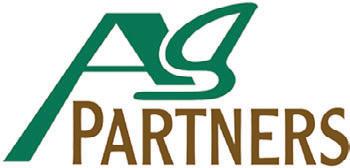

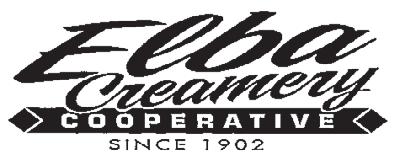















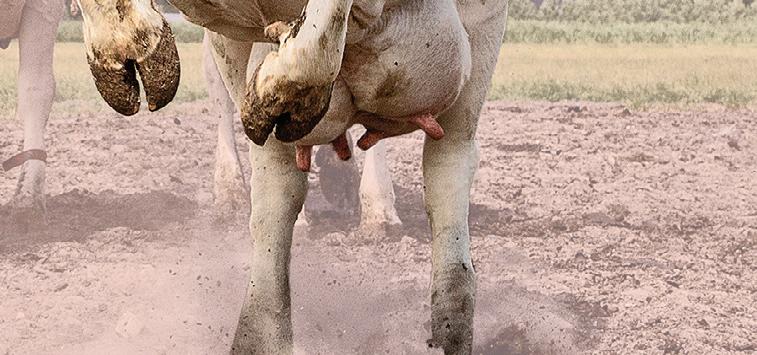















The dairy princesses who serve in their respective county’s princess programs act as Goodwill Ambassadors for the dairy industry, representing their area’s dairy farmers. They make public appearances across their county to educate people about the care and dedication dairy farmers take in producing wholesome, nutritious dairy foods for all to enjoy.





Why did you choose to run for your county’s dairy royalty program? I ran for the royalty program this year because I want to keep advocating for the dairy industry. I appreciate the opportunity I had growing up on a dairy farm and I would like to keep helping people understand and/or bring awareness to the dairy industry.

What are you looking forward to about this summer as a dairy advocate? My favorite part that I’m looking forward to is Dairy Night on the Farm. It is a big deal in my community and it’s where we take a farm for one night and open it up to the public. We bring in our malt wagon, have dinner, play games, and so much more. It is truly one of my favorite events!
Tell us about your connection to the dairy community. I grew up on a dairy farm in southeast Minnesota. I have shown cattle for a majority of that time, whether it be a Jersey or a Holstein, I always thought I had the Grand Champion cow. I attend Wartburg College where we do not have an ag program, but I have been talking to one of the heads of the science department, and Wartburg College is planning on adding an ag minor. So if/when it gets added I will be majoring in Ag Business and Pre Law.
What is a common misconception about dairy that you hope to shed light on? I hope to keep on enlightening (people about) what goes in milk. So many times people have the misconception that there are hormones in milk and other additives. I’d like to help shed light on why that is not true. Tell us something unique about yourself. I’d like to say I am a pretty good Kazoo player. I love annoying my friends with my renditions of greatest hits by Reba McEntire and Garth Brooks.


Why did you choose to run for your county’s dairy royalty program? I ran for this position because I want to represent my passion, the dairy industry. I love to show my passion to those I meet, and I feel like being a dairy princess would be a great way to do so.
What are you looking forward to about this summer as a dairy advocate? I look forward to meeting with consumers and producers alike. I love to learn, and I believe you can learn something from everyone. Tell us about your connection to the dairy community. My grandpa had a dairy herd until he sold it in 2012 but not before I realized my passion for the industry. I have worked at three dairies around my county and currently, I work at Betcher Dairy with a milking herd of about 125 cows. This July I was selected to go to Valencia, Spain where I will work on Granja Rinya where their milking herd is approximately 400 cows. At South Dakota State University I am also a part of the SDSU Dairy Club where I have had the opportunity to meet with people in the dairy industry from South Dakota and Minnesota predominantly.
What is a common misconception about dairy that you hope to shed light on? One misconception is that the dairy industry is bad for the environment. The dairy industry is taking steps to protect and better the environment and I hope to spread the facts to the public since it may not be what they are seeing on their social media or news outlets.






Tell us something unique about yourself. I named my first dairy heifer Betsy after my preschool teacher and two dairy princesses from my county at the time helped me fit her for the county fair.





Why did you choose to run for your county’s dairy royalty program? I decided to run for Fillmore County’s dairy royalty program because I want to reach morepeople around me. I want to help promote that dairy is truly good for everyone.






What are you looking forward to about this summer as a dairy advocate? This summer I look forward to promoting the dairy industry and connecting with people.
Tell us about your connection to the dairy community. I am connected to dairy in so many ways. I grew up on my dad’s family farm that hasbeen passed down through generations. My mom’s dad also owns a dairy farm called TrailsideHolsteins so I have grown up with dairy being a huge aspect of my life. I also love so many dairyproducts including milk, cheese, yogurt and obviously ice cream.

What is a common misconception about dairy that you hope to shed light on? I think that a common misconception about the dairy industry is that the cows don’t want to be milked and we make them get milked. Some people would say that cows don’t want to be milked two or three times a day. People that have built robot barns that allow cows to go get milked when they would like to have noticed that the cows will go get milked three to four times a day. So, cows truly do want to be milked.
Tell us something unique about yourself Something unique about myself is that I love talking to people and I find so much joy in tryingto make everyone’s day better.







Why did you choose to run for your county’s dairy royalty program? I chose to run for my county’s dairy royalty program for a few reasons, one being that it has always been a dream/goal of mine to serve as a dairy princess. With my grandparents being active with our local ADA program, I have been attending the dairy princess banquet since I was a young girl. I remember sitting in the audience and hoping to someday be up front getting the crown and sash. Another reason that I decided to run for the dairy royalty program is because it gives me the opportunity to give back to an industry that has taught me so much and given me so many opportunities. To add to this, I want to serve as an advocate for the dairy industry. The industry is very important to me, and I want to inform others about dairy.
What are you looking forward to about this summer as a dairy advocate? I am looking forward to meeting people from across the area and being able to share my story with them. I am excited to share the importance of the industry with others. There is a lot of information that people do not know or are misinformed about. I hope to inform others about the truth behind the industry.
Tell us about your connection to the dairy community. I have grown up on my family’s 80-cow dairy farm just outside of Zumbrota. On the farm I serve as the calf manager, primarily taking care of the youngstock. I also help with many other tasks on the farm including milking, fieldwork and any other tasks that need to be done. In addition to this, I am very active in 4-H and FFA where I participate in dairy judging, dairy quiz bowl, showing dairy cattle and am a member of the county dairy PDC.





What is a common misconception about dairy that you hope to shed light on? One common misconception that I hope to inform the public about is the reason behind certain farm practices. One example might include, why we don’t leave the calves with their mothers. Often this can be a topic that many people do not understand and just make assumptions about farmers. I hope to help the public understand why certain practices are done, and that farmers do have their animals’ best interest in mind.
Tell us something unique about yourself This last summer during our county 4-H dairy show the halter came off of my brother’s spring calf and she started to run away. I thought I would be able to catch her, but it had rained that morning and the sand was slippery so it didn’t go as planned. I ended up catching her, but in the process slid in the sand and stained my white show pants. And to make it better, it was right before my showmanship class.
The crown and banner worn by a dairy princess make it easy for the public to identify who she is and what she represents.
Why did you choose to run for your county’s dairy royalty program? The dairy industry is something I’ve always had a passion for, and I’m so excited to be able to share my passion and educate others about it.
What are you looking forward to about this summer as a dairy advocate? I look forward to spending time with kids and being able to teach them about dairy farms in a fun way.
Tell us about your connection to the dairy community. I moved to Zumbrota in 2012 and helped my dad with milking cows and feeding the cows and calves. We sold the cows in 2015, and the next year I was able to start helping my grandparents milk their cows. I have been helping out there for about six years now, and I have bought a couple cows from them and been able to grow my herd over there. I still help out on my home farm with feeding all the animals we have, we just don’t milk anymore. I am also active in the dairy knowledge bowl, dairy judging, and dairy foods judging for FFA and 4-H. I also show cattle for 4-H and this year will be my 10th year showing. What is a common misconception about dairy that you hope to shed light on? I think a common misconception is that dairy farmers mistreat their animals, but this really isn’t the case. We spend our whole lives caring for these amazing animals. We spend every day feeding them, cleaning out pens, changing bedding, milking them and observing them to make sure they’re all healthy and getting any treatment they need if not feeling well. This is all to make sure cows have the optimal comfort they can, to be able to produce milk and other goodies for the world. I know on our farm we love to give extra scratches and hugs to our cows.

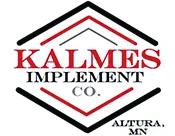
Tell us something unique about yourself My favorite cow (ladual) has a very unique face pattern, her hair being split about 3⁄4 white and 1⁄4 black which looks so cool.





























Why did you choose to run for your county’s dairy royalty program? I have dreamed of being a dairy princess ever since I was a little girl. In my community I want to educate others about the importance of dairy in the human diet.

What are you looking forward to about this summer as a dairy advocate? I look forward to meeting new people and connecting with the public about the importance of dairy. Tell us about your connection to the dairy community. I work on my family’s 150-cow dairy farm where we milk mostly Holsteins and a few Jerseys. On our farm I am the calf manager. In addition to raising the calves, I help with milking, assist with the herd health program, help with record keeping, and also help with field work. I am active in 4-H, FFA and Junior Holstein. I enjoy showing dairy cattle at local, state and national shows.
What is a common misconception about dairy that you hope to shed light on? I think a common misconception about dairy is that it is not healthy. Dairy is nutritious! Dairy contains 13 essential nutrients that are important for overall body function. Dairy is for everyone and there are so many options to choose from. Tell us something unique about yourself. Something unique about me is that I pole vault in track.





Why did you choose to run for your county’s dairy royalty program? I decided to run because I have wanted to since I was young when I saw my older cousin Shelby become a dairy princess. I also have lived and worked on my family’s multi-generation farm my whole life. I care a lot about our animals, our lifestyle and our community. I want to share with people that may not know or are misinformed about the nutrition, sustainability and enjoyment in dairy.
What are you looking forward to about this summer as a dairy advocate? I look forward to putting a smile on people’s faces and having little kids look up to me. I also get to talk about cows.
Tell us about your connection to the dairy community. Both sides of my family have been dairy farmers for many, many generations, since the time they moved to America from different countries and probably even before that. I spent my childhood in the parlor and on tractors alongside my parents and grandparents. I continue to help with chores everyday milking, feeding calves and working as a general livestock caretaker. What is a common misconception about dairy that you hope to shed light on? One big misconception is the mistreatment of our animals; I want to enlighten people that from my experience, and the experience of many people I know, this isn’t true. I know that on my family’s and friends’ farms we put the health and happiness of our cattle first. Farmers work tirelessly in all weather conditions to make sure that cattle get the best treatment. We work alongside nutritionists, veterinarians, truckers and more to constantly improve the life of the cows and calves. Tell us something unique about yourself. When I was a baby/small child my parents and grandparents always had me in the barns and equipment alongside them while they did chores. During field work they would have to stop and lay a blanket out in the hay fields to change my diapers, and many times I would throw tantrums. My grandpa would also take me along in the dump truck to haul sand and would have to take care of me at gas stations. One day when I wasn’t along, the dump truck tipped over on its side and diapers and bottles went everywhere. My grandpa was okay other than the other truckers laughing at him about the boxes of diapers scattered around his cab.
Why did you choose to run for your county’s dairy royalty program? I chose to run because I want to promote the dairy community. The dairy royalty program is something I have been looking forward to since I ran as a Little Miss Squirt candidate 10 years ago. I watched my sister go through the program and am excited to start my journey as a dairy community representative.
What are you looking forward to about this summer as a dairy advocate? I look forward to helping at our Breakfast on the Farm event this summer. Here I’m able to show directly where our food comes from and connect and communicate with the consumers on a personal level.
Tell us about your connection to the dairy community. I grew up on my family’s dairy and crop farm where we milk 140 Holstein cows. I enjoy helping on the farm when I can by milking the cows and bottle-feeding calves.

What is a common misconception about dairy that you hope to shed light on? A common misconception that I would like to enlighten the public on is that nutrition in milk is easily replaceable. I have found that it would take many different combinations of food to get the same amount of nutrients in our bodies as the 13 essential nutrients that milk contains to help your body remain healthy and are found in just one glass of milk.

Tell us something unique about yourself. Every year over the summer my sibling and I plant a huge garden. We grow vegetables, pumpkins and flowers that are picked and used to show at the fair, sell at our roadside stand, or cooked in the kitchen. Cooking with homegrown produce makes all the food taste better, especially when paired with my favorite dairy products. After doing this for many years it has become a talent of mine to keep my plants alive.
Why did you choose to run for your county’s dairy royalty program? I love educating my friends about the benefits of dairy as well as the care and keeping of cows, so running for dairy princess only seemed fitting.


What are you looking forward to about this summer as a dairy advocate? I am looking forward to all the educational opportunities we will have, especially in schools. I love seeing kids learn something new.
Tell us about your connection to the dairy community. I was raised by two former dairy farmers, so the dairy industry was a big part of my childhood. At 15 I started milking cows for a neighboring dairy farm and I now feed calves or milk nearly every day.
What is a common misconception about dairy that you hope to shed light on? Dairy is sustainable and great for the local community. Ninety-four percent of farms in the United States are family owned and committed to caring for their animals and their land. The happier the cows, the happier the farmers.





Tell us something unique about yourself. I’ve read around 20 books this year, however, my goal is 70 so I’m nearly falling behind.






Why did you choose to run for your county’s dairy royalty program? I chose to run for our county’s dairy royalty because I wanted to impact and represent our county’s dairy program and teach others more about the dairy industry. What are you looking forward to about this summer as a dairy advocate? I am looking forward to representing, helping the kids have fun within the dairy industry and promoting dairy. Tell us about your connection to the dairy community. I didn’t grow up on a farm but both my parents grew up on a dairy farm. I wanted to follow that pattern therefore I started to work at a local dairy farm and started showing dairy cows at the fair and I loved every minute of it.
What is a common misconception about dairy that you hope to shed light on? I think a very common misconception is that farmers don’t care about their animals. How the animal is taken care of and its health is all tied to the health of that farm. An unhealthy cow would produce less milk and farmers would have poor milk production or cause expenses. All of this affects the farm substantially. Herd care is key when having a farm. Tell us something unique about yourself. Something kind of unique about me is that I played basketball since I was pretty little up until my junior year of high school when I decided to give up my talent in basketball and work more hours at my job.





Why did you choose to run for your county’s dairy royalty program? I chose to run for my county’s dairy royalty program because I am a firm believer in the dairy industry and want to be able to aid in the positive promotion and education of its impact on today’s society.

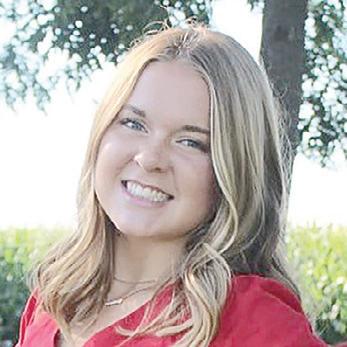
What are you looking forward to this summer as a dairy advocate? This summer I am looking forward to interacting with various people throughout my role as a dairy advocate. People are what started this program, the reason we have it, and the connections we make along the way are truly something to look forward to.

Tell us about your connection to the dairy community. My connection to the dairy community stems from a long line of farmers. Most importantly though, the strong women in dairy who have been by my side since the day I was born. My older sister has always been involved in dairy, being a former dairy princess herself, and now owns her own dairy farm with her husband, while my parents and I custom raise dairy calves for Prestrud Dairy. What is a common misconception about dairy that you hope to shed light on? I find it extremely important to educate the public on how the dairy industry follows strict guidelines to ensure that all animals are raised humanely. In addition, I want to share that milk is vital for growth and development among youth and can be safely consumed by those with a lactose intolerance. Tell us something unique about yourself. When I was younger, I would always follow my parents to the barn but eventually get tired of chores and decide to play with my favorite farm cat Mama Loofy. However, these adventures often led me to crawl through tunnels she created in our hay bales. On one occasion I remember finding a secret exit that led me nose-to-nose with an unexpecting heifer. I often look back at those adventures with fond memories of all the silly moments I had alongside the cattle raised on the family farm.


Why did you choose to run for your county’s dairy royalty program? I am very passionate about spreading the goodness of the dairy community. I think that everyone should know where quality dairy products come from. I joined for the purpose of spreading knowledge of the dairy community.





What are you looking forward to about this summer as a dairy advocate? Teaching younger kids about where dairy products come from and sharing information about the dairy world with the community.
Tell us about your connection to the dairy community. I live on my family’s dairy farm where we milk 275 registered Holstein cows. This gives me a strong connection to the dairy community. Living and working on my farm gives me a plethora of knowledge to share.
What is a common misconception about dairy that you hope to shed light on? I think a common misconception is that cows do not get treated very well. I work on our dairy farm and I can assure that our cows are getting taken care of by making sure they are comfortable and they receive an abundance of food and water. On my farm we know each cow by name and history.
Tell us something unique about yourself. On our dairy farm, our cows are registered so we name every single calf that is born. The name has to start with the same letter of the mother’s name. Some of the names get pretty interesting because we have so many cattle but it keeps things intriguing. My birthday is on the 4th of July and so I get fireworks for my birthday every year.

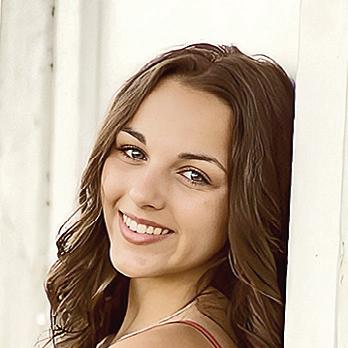

Why did you choose to run for your county’s dairy royalty program? I chose to run because my sister got me into it three years ago. And because I love the community.
What are you looking forward to about this summer as a dairy advocate? I can’t wait to go to all the events and talk to people about dairy.

Tell us about your connection to the dairy community. I grew up on a dairy farm located in Plainview, Minnesota. We have two robotic milkers that milk about 140 cows.

What is a common misconception about dairy that you hope to shed light on? That we mistreat our animals. Tell us something unique about yourself. Something unique about me is that I’m a really good singer and not a lot of people know this.

Why did you choose to run for your county’s dairy royalty program? I chose to run for my county’s dairy royalty program because I enjoy spreading the goodness of dairy and educating the public about dairy products and dairy farmers. The dairy industry has played a large role in my life, and I enjoy giving back to dairy farmers through this program.
What are you looking forward to about this summer as a dairy advocate? My favorite part about my summer as a dairy advocate is seeing people get excited about dairy. Whether that’s adults begging me to throw cheese sticks at them during parades or young kids getting excited to wear a cow hat and moo at the cows, it’s always enjoyable to see others become energized over something I am passionate about.
Tell us about your connection to the dairy community. My grandparents milked Holsteins and Red and White Holsteins until 2005. My family kept a few cows at a family friend’s farm which allowed me to become involved with showing at county fairs. I was also able to lease animals from our family friends. This year, I started working in undergraduate research at the Iowa State University Dairy Farm. This summer, I am leasing cattle from Little Valley Dairy in Plainview to show at 4-H and FFA shows.
What is a common misconception about dairy that you hope to shed light on? One common misconception is that the removal of calves from their mothers soon after birth is inhumane. I hope to enlighten the public by explaining why dairy farmers separate calf from cow at an early age and also sharing how this separation can benefit both the calf and the cow.
Tell us something unique about yourself. Something unique about me is that I started my own meat goat herd as a fourth grader and I show these goats at county and state fairs.


Why did you choose to run for your county’s dairy royalty program? I always knew I wanted to run for county dairy princess after watching my first Princess Kay of the Milky Way at the Minnesota State Fair. After watching the top finalist compete for something they felt truly passionate about, I knew that I wanted to see myself on that stage in the next 10 years. As years went by I began watching my older sisters take that next step and become part of Wabasha County Dairy Princess program. After watching them go out into the community and talk to consumers about the importance of dairy, I knew I wanted to follow their footsteps and take that next step.
What are you looking forward to about this summer as a dairy advocate? This summer I look forward to showing the community different ways they can partake in the dairy world. Growing up some of my favorite memories include my family and I making homemade cheese and butter. I think that this is a great example that allows consumers to not only have a tasty treat but to also learn how to use dairy products in different ways.
Tell us about your connection to the dairy community. My connection to the dairy world, is by having grown up on my family’s farm here in Wabasha County. My connection doesn’t end with the farm, but only branches out from there. Growing up on the farm has led me to connect with many parties of the dairy community such as milk haulers, inspectors, veterinarians and nutritionists, just to name a few. Having connections to all these very different professions allows me to make a perfect mix to help benefit my family’s farm.
What is a common misconception about dairy that you hope to shed light on? Many people forget just how serious dairy farmers take sanitization. Following safety rules and procedures comes first when it comes to milking cows. Not only do farmers keep their pens and animals clean, but we also have to keep all of the milking equipment clean to prevent any bacteria from getting into the milk. I hope to be able to spread the realization of what a dairy farm must achieve before sending their milk off to the milk haulers.
Tell us something unique about yourself. A unique thing about me is that I raise dairy and meat goats. It all started when I was in fifth grade and wanted to show goats. After that I have been buying and selling both dairy and meat goats, mainly for showing purposes, but also for breeding. What started as two baby dairy goats has now led into forty dairy and meat goats.
MONDAY 8:00 am Overnight market cows/bulls 10:00 am Fed cattle, followed by day-delivered market cows & bulls
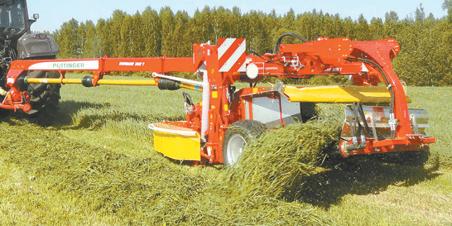





1:00 pm Dairy cattle, stock cows & breeding bulls followed by feeder cattle

4:00 pm Baby calves, arena 2
TUESDAY 8:00 am Sheep and goats 11:00 am Feeder pigs




WEDNESDAY 10:00 am Hog/Sow/Boar Auction




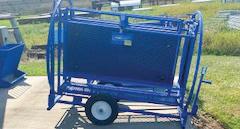


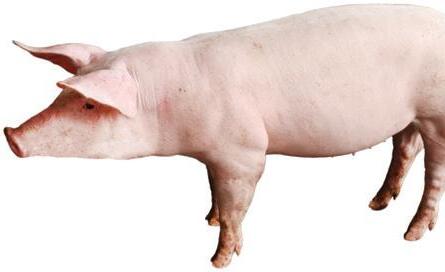

2:00 pm Fed cattle, followed by market cows and bulls
THURSDAY 10:00 am Special feeder cattle auctions, September - April



FRIDAY Closed Office open 8:00 am – Noon


YARD HOURS
Sunday Noon – 10pm



Monday 6am – 10pm


Tuesday 6am – 10pm
Wednesday 6am – 4pm (Open until 10pm, preceding special Thursday sales ONLY)


Thursday 6am – 4pm

Friday 6am – Noon
Saturday By Appointment

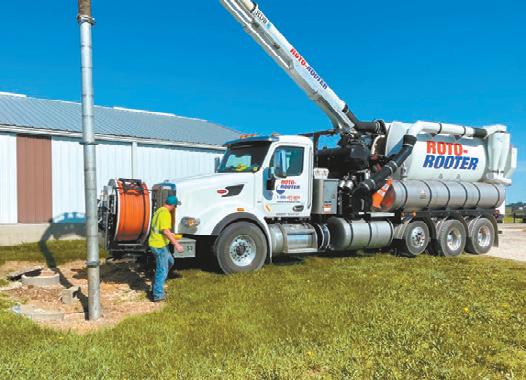










































KASSON – A gentle haze of smoke from two battery cable probes sizzling in wood fills the air in Rick Pagel’s shop. As the burn channels in the wood from where the two probes meet, the fire flames up and Pagel flips the switch off that connects his microwave transformer and cables to electricity.
“Basically, you’re manufacturing lightning,” said Pagel, of Kasson. Pagel, who has a background in dairy farming, uses that energy to create one-of-a-kind wood art.




And, it has a following.
The piece he donated to the Minnesota All Breeds Convention silent auction sold to the Holstein USA CEO John Meyer for $550. The piece features fractal burned wood on the top and bottom, and the center has a wood burned cow and a wooden tag with the phrase, “All Breeds Matter.” The wood burned pieces are set in a marbled sea of colored resin.

The silent auction sale, Pagel said, gave him confidence that his art is on the right track.
Fractal burn, which is one of the techniques Pagel uses on his pieces,
occurs when electricity is forced through wood that has been dampened with water amended with baking soda. Because wood is a non-conductor, the electricity finds the capillaries and veins in the wood and burns an intricate path. The burns have a feathery, rootlike appearance, and no two fractal burns ever look exactly the same.


Once the burn is complete, Pagel scrubs out the char from the burn vein and





PHOTOS BY AMY KYLLO
(Above) Rick Pagel sprays a piece of wood with water amended with baking soda in preparation for a fractal burn March 23 at his shop in Kasson. Pagel discovered fractal burning about two years ago.
(Left) Probes burn a pattern into a piece of wood at Rick Pagel’s shop. Pagel describes fractal burning as “manufacturing lightning.”
adds colored resin into the clean burn channels. Wet resin is the consistency of syrup so Pagel uses a syringe and a teat cannula to accurately apply the resin into the burn veins. Once a piece is complete, he covers it in clear resin to seal.
Statistics from the American Association of Woodturners show that fractal burn art is very dangerous. There have been 33 deaths since 2017 directly connected to fractal burning. Death occurs via electrocution. The group has banned the practice, but fractal burn artists such as Pagel persist. Pagel said he likes the risk.
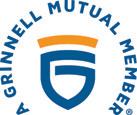
“Anybody … that knows Rick Pagel will lean back in their chair and laugh and go, ‘That’s the last damn thing Pagel should be messing with,’” Pagel said. “He’s already been a risk taker since he was 5 years old.”
Pagel page 15
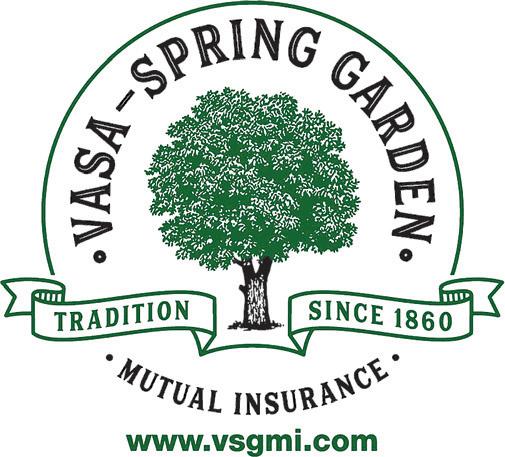












































Pagel creates custom wood farm pieces. Currently, he has about a dozen orders for custom tables and signs. Customers will ask him to customize the work with their farm’s logo or a likeness of a cow that is special to their family.


Last year at the World Dairy Expo, Pagel brought a wooden cow head he had created, hung it up in the barn and came back with orders for around 10 more. Pagel customizes the cow markings to match the specific cow a customer requests.
“Cows are cows, but the good one that I had is different than the good one that you had,” Pagel said. “The challenging part is to make it real.”
Pagel does wood burning on many of his pieces, even creating farm scenes. A recent wood burn piece features a barnyard with a sickle mower in it. He will trace the main building such as the barn but adds in the details like trees by hand. Pagel learned to draw by watching TV.

“I can’t tell you how much time I spent sitting watching Bob Ross with some acrylic paint and (a) 79 cent paint brush,” Pagel said.

Pagel also gains inspiration from social media.
“Pinterest is one of my favorite things on farm machinery,” Pagel said. “While I’m scrolling through, bang, there’s a picture of that sickle mower.”










Pagel and his fellow wood art enthusiasts, Brad Bratten and Alex Lorentz, create fractal burn art with resin added and also detailed wood burning and carpentry pieces. The art is simultaneously a hobby and a side income for him and his friends.
“Idon’twanttogetso



buried in it that I don’t enjoy it,” Pagel said.









Besides custom orders, they also donate their pieces to charity events. Pagel said that they have never left a charity event where they donated without orders.




One of their goals for the future is to be able to do larger fractal burn piec-
























es. To accomplish this, they are planning to build a slab flattening jig for the lumber required for pieces like bar tops.





Pagel said he feels a responsibility when he creates custom pieces for farms to make sure the piece’s quality reflects the deep meaning the piece has to his customers.

“It’s in my DNA of you know how important that particular cow or that farm logo is to those people,” Pagel said. “If you’re a farm person, it it’s your being. That lifestyle is part of you.”



While Pagel continues to jolt artwork to life, he said he hopes the finished pieces bring others joy.








































After years of searching for the perfect home that fits their needs or would be excited to renovate, John and Nancy decided to build! Around that same time, they attended the Eagle Bluff Environmental Learning Center’s presentation about the Passive House movement – an exceptionally rigorous building standard that results in a home which, using the latest technologies, has the smallest carbon footprint currently possible.
The concept hit home. John says he doesn’t consider himself an “environmentalist” per se; he just believes in living within his means.


“We believe in energy conservation. We believe in protecting our valuable non-renewable resources. But we’re also big believers in electricity and living the lifestyle we’ve come to know within reason, but just to do it more efficiently and more economically.”...

To see more testimonials visit us at www.solarconnectioninc.com
